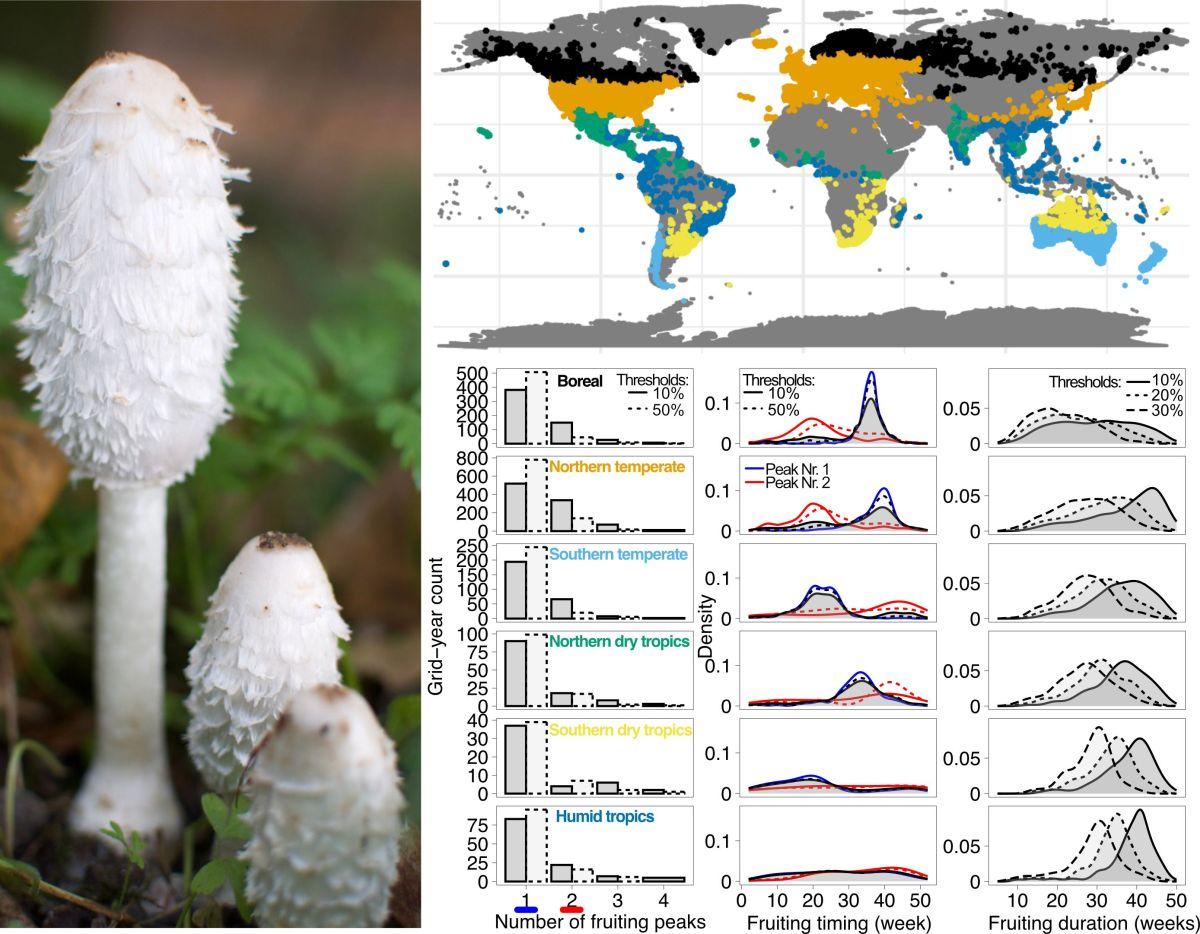The Expanding Threat Of Internal Fungal Infections Due To Climate Change

Table of Contents
Rising Temperatures and Humidity: A Breeding Ground for Fungal Pathogens
Rising global temperatures and increased humidity are creating ideal conditions for the proliferation of fungal pathogens. Many fungi thrive in warmer, more humid environments, experiencing accelerated growth and increased spore production under these conditions. This translates to a greater abundance of airborne fungal spores, increasing the likelihood of human exposure and infection.
- Temperature Increase and Fungal Growth: Studies have shown a direct correlation between temperature increases and the growth rate of various fungal species, including those known to cause serious internal infections like Aspergillus and Candida. Even slight increases in average temperatures can significantly impact fungal populations.
- Humidity Levels and Spore Dispersal: High humidity provides the necessary moisture for fungal spores to germinate and grow. Increased rainfall and flooding, both intensified by climate change, further contribute to the spread of fungal spores through water contamination and the creation of damp environments ideal for fungal colonization.
- Examples of Thriving Fungi: Species like Coccidioides, the cause of coccidioidomycosis (valley fever), are expanding their geographic range due to increased aridity and heat. Similarly, Histoplasma capsulatum, responsible for histoplasmosis, thrives in environments enriched by bird and bat droppings, which are more prevalent in warmer climates.
Weakened Immune Systems and Increased Susceptibility
Climate change indirectly impacts human health, weakening immune systems and thereby increasing susceptibility to infectious diseases, including severe fungal infections.
- Malnutrition and Climate Change: Extreme weather events, such as droughts and floods, can disrupt food production and lead to malnutrition, compromising immune function and increasing vulnerability to opportunistic fungal pathogens.
- Increased Exposure to Pollutants: Climate change exacerbates air pollution, increasing exposure to harmful particles and gases that can further weaken the immune system.
- Vulnerable Populations: The elderly, infants, and individuals with pre-existing conditions (such as diabetes, HIV, or cancer) are particularly vulnerable to severe fungal infections due to their already compromised immune systems. Extreme weather events themselves can directly worsen pre-existing health conditions and stress the immune system further.
Geographic Expansion of Fungal Pathogens
Climate change is facilitating the geographic expansion of fungal pathogens, enabling them to thrive in regions previously unsuitable for their survival.
- Altered Climate Conditions: As temperatures rise and humidity increases, many fungal species are expanding their geographic range, moving into higher altitudes and latitudes. This expansion introduces new populations to pathogens they have never encountered before, leading to increased infection rates.
- Examples of Migrating Fungi: Several fungal species known to cause serious internal infections are demonstrating shifts in their geographic distribution, mirroring changes in climatic conditions.
- Emerging Fungal Diseases: The introduction of fungal pathogens into new regions can lead to the emergence of novel fungal diseases, potentially more virulent and difficult to treat than those currently known. This poses significant challenges for healthcare systems that lack the expertise and resources to manage these new threats.
The Impact on Healthcare Systems
The rising prevalence of internal fungal infections places an increasing strain on healthcare systems globally.
- Increased Healthcare Burden: Diagnosing and treating these infections requires significant medical resources, including specialized laboratory tests, antifungal medications, and prolonged hospital stays. The increased incidence of these infections directly translates to a heavier burden on healthcare providers and facilities.
- Diagnostic Challenges: Accurate and timely diagnosis of internal fungal infections can be challenging, requiring sophisticated laboratory techniques and expertise. Delays in diagnosis can lead to more severe outcomes.
- Antifungal Resistance: The increasing use of antifungal drugs is driving the development of resistance, making treatment more difficult and potentially life-threatening.
- Economic Impact: The cost of treating internal fungal infections, including hospitalizations, medications, and long-term care, represents a significant economic burden on individuals, healthcare systems, and national economies.
Conclusion:
The evidence overwhelmingly demonstrates a significant link between climate change and the expanding threat of internal fungal infections. Rising temperatures and humidity create ideal conditions for fungal growth and spore dispersal, while climate change-related health impacts weaken immune systems, increasing susceptibility. The resulting geographic expansion of fungal pathogens and the emergence of new diseases place an immense strain on healthcare systems globally. Further research into fungal pathogens, improved diagnostic tools, the development of new antifungal treatments with reduced resistance potential, and robust public health initiatives are urgently needed. We must also address climate change itself to mitigate this growing public health crisis. Understanding and addressing the expanding threat of internal fungal infections due to climate change is crucial for safeguarding global public health. Advocate for climate action and increased funding for research to combat this rising threat.

Featured Posts
-
 Italian Open Gauff Advances To Third Round Matching Sabalenka
May 26, 2025
Italian Open Gauff Advances To Third Round Matching Sabalenka
May 26, 2025 -
 The Disappearance Unraveling The Mystery
May 26, 2025
The Disappearance Unraveling The Mystery
May 26, 2025 -
 Naomi Kempbell Svyatkuye 55 Rokiv Naykraschi Foto Zirki
May 26, 2025
Naomi Kempbell Svyatkuye 55 Rokiv Naykraschi Foto Zirki
May 26, 2025 -
 Southern Vacation Locations Safety Rating Challenged After Shooting
May 26, 2025
Southern Vacation Locations Safety Rating Challenged After Shooting
May 26, 2025 -
 Van Der Poel Takes Third In Paris Roubaix Pogacar Over A Minute Back
May 26, 2025
Van Der Poel Takes Third In Paris Roubaix Pogacar Over A Minute Back
May 26, 2025
